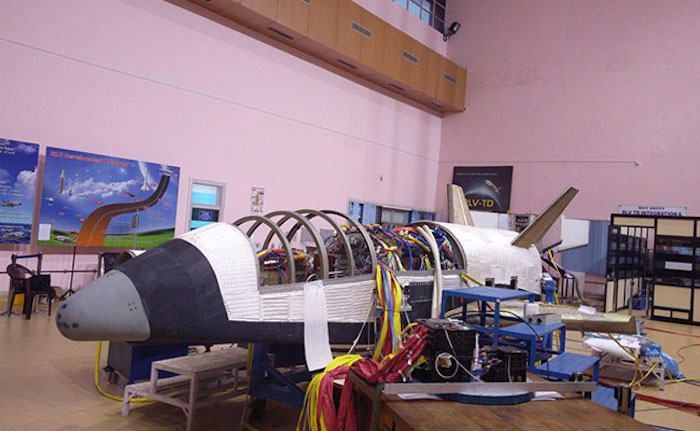.
17.05.2016
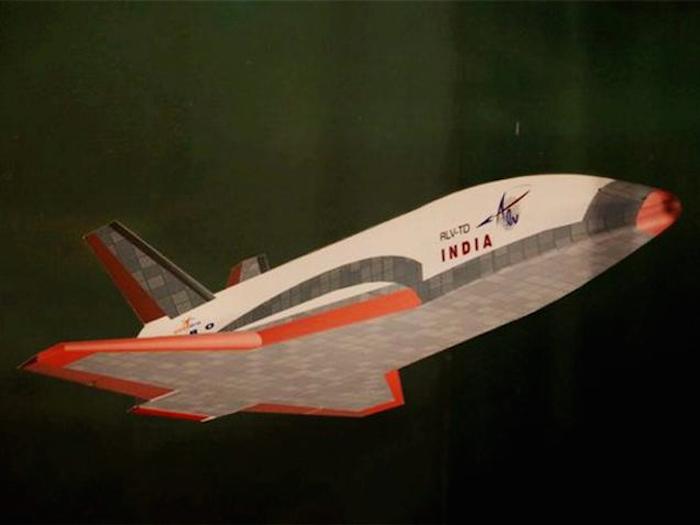
RLV-TD cleared for launch 3 years ago
-
It may be recalled that the RLV-TD had undergone a review in 2012 itself and had been cleared for launch in late 2013. According to Dr. K. Sivan, director of the Vikram Sarabhai Space Centre (VSSC), there were essentially three reasons for the delay of three years. One was though ISRO had planned for a certain schedule of launches, because of some unforeseen failures in GSLV launches, the entire schedule got affected.
“All the engineering effort had to be diverted to make the indigenous cryo-engine successful,” Dr. Sivan said.
“Iron Bird” simulations
Another chief reason was the realisation of the necessity of carrying out additional tests of the RLV system. Among these was a very important test called “Iron Bird” simulations. What is done here is to connect the entire RLV system mechanically as in flight condition and carry out the simulations. Here the actual flight profiles are simulated using mechanical actuators (complete with hydraulic plumbing lines), control electronics and the entire Navigation and Guidance Control (NGC) hardware and software developed at ISRO.
This test was not included in the earlier Loop Simulation runs for RLV-TD.
Use of ‘hot structures’
The second is related to the use of “hot structures” in RLV. In conventional launch vehicles, the structural elements are called cold structures because temperature is not a criterion there. Here, however, thermo-structural stability of the elements becomes important, Dr. Sivan pointed out. This was also not there in earlier considerations. A conventional LV, for instance, undergoes structural and thermal tests separately.
“These are very time-consuming tests,” pointed out Dr. Sivan, “wherein most intricate and detailed data have to be obtained.” For “hot structures”, such as the nose cap, the RLV uses carbon-carbon composite structure.
Quelle: The Hindu
---
ISRO’s Reusable Launch Vehicle to take off next week
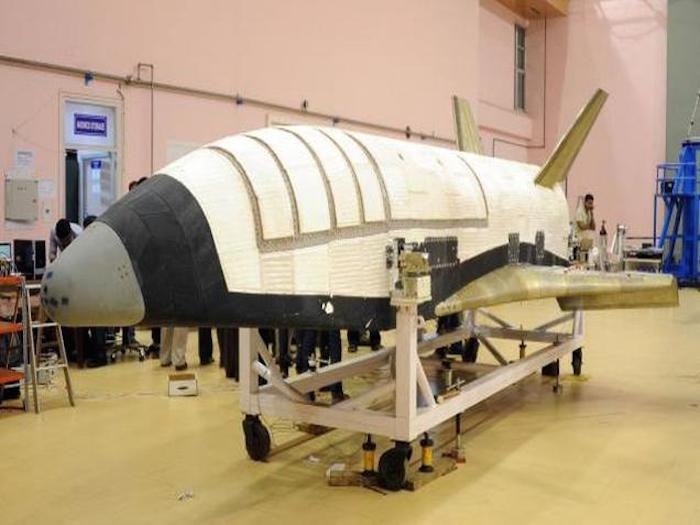
The technology demonstrator will take place from Satish Dhawan Space Centre in Sriharikota.
The first technology demonstrator (TD) launch of the Indian Space Research Organisation’s Reusable Launch Vehicle (RLV), or the spaceplane in popular parlance, will take place on May 23 at 9.30 a.m. from the Satish Dhawan Space Centre (SDSC), Sriharikota, according to ISRO officials.
Visually, the RLV-TD is a rocket-aircraft combination measuring about 17 m, whose first stage is a solid propellant booster rocket and the second stage is a 6.5 m long aircraft-like winged structure sitting atop the rocket.
A misnomer
However, the popular perception of the technology as a marriage between rocket and aircraft is a misnomer.
In RLV-TD that is awaiting launch at SHAR, the first stage, weighing about 9 tonnes, is merely the Satellite Launch Vehicle (SLV-3) flown in the 1980s.
The vehicle will take off like a rocket and the RLV will be taken to a height of 70 km and where the booster will release the vehicle to carry out its manoeuvres.
Hypersonic Experiment 1
According to Dr. K. Sivan, director of the Vikram Sarabhai Space Centre (VSSC), Thiruvanathapuram, where the RLV was designed, assembled and where it underwent basic electrical, hydraulic and “sign check” tests, the objective is to achieve hypersonic speeds to basically test the hypersonic aero-thermodynamic characterisation of the winged body’s re-entry, its control and guidance systems, autonomous mission management to land at a specific location at sea and testing of “hot structures” that make up the structure of the RLV.
The test is, therefore, termed as Hypersonic Experiment 1 (HEX-1).
Complex technology
A conventional launch vehicle (LV), says Dr. Sivan, spends the lowest time of its flight in the atmosphere, whereas the RLV system spends all the time in the atmosphere. Also, while an aircraft experiences limited flight regime of say Mach 0 to Mach 2 or so, the RLV experiences a much wider range of flight regimes.
Hence the technology of an RLV is much more complex basically arising from the design of the control and guidance systems, he pointed out.
In HEX1, the winged RLV is otherwise a dummy with no powered flight of its own. In this test, the RLV will attain a flight regime of Mach 5 with the help of the booster alone, Dr. Sivan said. At the end of the HEX1 mission, the aircraft will land in sea. The total flight duration of the RLV-TD from launch till splash down will be about 10 mins.
However, the ultimate objective of the RLV programme of ISRO is to enable the vehicle traverse a very wide range of flight regimes from Mach 0 to Mach 25 based on air-breathing propulsion for achieving two-stage-to-orbit (TSTO) launch capability.
The integrated test system (booster plus the RLV-TD) is already at the SDSC (SDSC), Sriharikota. Prior to being moved to Sriharikota, the RLV subsystem underwent acoustic tests at the National Aerospace Laboratories of the CSIR (CSIR-NAL) and the booster went as a separate subsystem directly from VSSC. At SDSC the two were mated together.
Dr. A.S. Kiran Kumar, ISRO Chairman, called the first test launch HEX1 “a very preliminary step” and stressed that “we have to go a long way” before it could be called a re-usable launch system. “But these are very essential steps we have to take,” he said.
Lower cost
Asked whether the Indian reusable launch system was aimed at bringing down the launch cost, the ISRO Chairman said, “It will bring down the cost. Towards that, we will have to work and go through these initial steps,” the Chairman said.
Flying test bed
The present design is basically “a flying test bed to evaluate various technologies, namely hypersonic flight, autonomous landing, powered cruise flight and hypersonic flight using air-breathing propulsion using a scramjet engine”, according to ISRO website.
The HEX series of experiments will be followed by the landing experiment (LEX), return flight experiment and scramjet propulsion experiment (SPEX).
The basic design of a scramjet has already been evolved.
A test launch of the engine aboard a sounding rocket, which will achieve a flight regime of up to Mach 8, will take place some place in June at SHAR, Dr. Sivan said.
Quelle: The Hindu
-
India Takes One Small Step Toward Its Own Space Shuttle
Scale model of craft will make giant leap to be sent 43 miles above the Earth
India is making one small step toward its ambition to one day launch a space shuttle.On May 23, scientists at the Indian Space Research Organisation, or ISRO, will send aloft a scale model of a reusable spacecraft as a test.
If the mission is successful, it would represent a breakthrough for India’s low-cost space-exploration program. But it would still take a long time to develop a working space shuttle.
“It is a technology demonstrator launch. It is a baby step,” an ISRO official, who declined to be named, said Monday. “To build and launch a proper space shuttle can take anything between 10-15 years.”
India has gained global recognition for its budget satellite launches. In 2014, ISRO put a satellite into Mars orbit on a shoestring, making India the first Asian country to reach the red planet.
“Low-cost access to space is the future,” the ISRO official said.
.
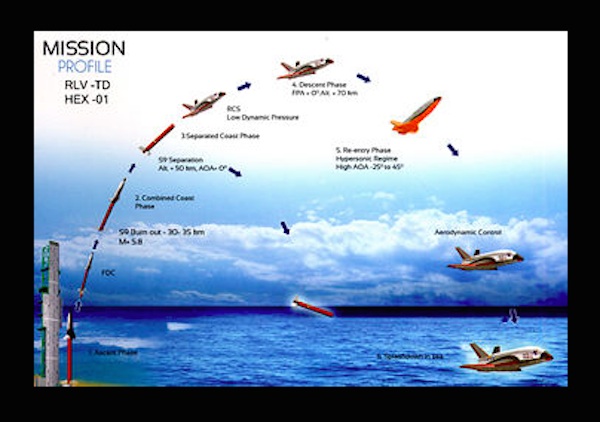
The model shuttle, about one-sixth the size of the planned craft, will be launched from a small island off coast of the southern Indian state of Andhra Pradesh.
It will travel to an altitude of around 70 kilometers (43 miles) and then return to Earth so scientists can see how it behaves as it re-enters the atmosphere.
The plan is to attempt a controlled landing of the space craft in the Bay of Bengal, the official said. There won’t be an attempt to recover the vehicle, he said.
The launch will follow India’s recent launch of a satellite, essential for the creation of the country’s own satellite-navigation system.
Quelle: THE WALL STREET JOURNAL
.
Update: 20.05.2016
.
Isro all set to test the `desi space shuttle' on May 23
-
THIRUVANANTHAPURAM: In a first-of-its-kind indigenous space mission, Indian Space Research Organisation (Isro) is all set for the launch of Re-usable Satellite Launch VehicleTechnology Demonstrator (RLV-TD) on May 23. It is cheered as a baby step towards the historic launch of the advanced RLV by 2020.
After a series of tests at the sub-system level such as actuator and flight control tests, followed by integration of the shuttle parts with electronic tests in March this year, RLV-TD was sent to National Aerospace Laboratories (NAL) in Bengaluru for acoustics testing. Now, the space shuttle is at Sriharikota spaceport and the final mission readiness tests are being conducted for its launch, which is tentatively scheduled for May 23, VSSC director K Sivan said.
"RLV-TD is a baby step towards the launch of the advanced RLV with air breathing propulsion system (ABPS) and reusable launch vehicle technology. The purpose of developing advanced RLV with ABPS is to reduce the cost of space launches, if engines and structures are recovered and re-used. Current RLV-TD has no recovery plans," he said.
Current RLV-TD incurs a project cost of Rs 95 crore. The advanced RLV with ABPS uses atmospheric air as oxidizer for combustion, with vehicle fuel to propel the rocket, and it can bring down space travel cost by 110th and eventually by 1100th later.
Quelle: THE TIMES OF INDIA
.
Update: 22.05.2016
.
India to test reusable launch vehicle technology on Monday
Bengaluru, May 22 (IANS) India will test on Monday a reusable launch vehicle technology (RLV) space agency ISRO developed to reduce cost of firing rockets to deploy satellites in orbit, a senior official said. "A mini-rocket with the winged reusable launch vehicle demonstrator (RLV-TD) on its top will lift-off during the launch window between 7 a.m. and 11 a.m. on Monday, depending on wind and weather conditions," Indian Space Research Organisation director Devi Prasad Karnik told IANS here. A successful demonstration of the indigenously-developed technology will qualify India to enter the elite club of space-faring nations like the US, Russia and Japan, which have developed and used RLVs for their space missions over the years. The 9-metre rocket with a mass weight of 17 tonnes, including nine tonnes of solid propellants, will take off vertically from ISRO's spaceport at Sriharikota in Andhra Pradesh, about 80 km northeast of Chennai. The ISRO has designed and built the 1.7-tonne winged RLV-TD as a flying test bed to evaluate technologies developed to reduce the cost of launching rockets for carrying satellites into polar and geo-stationary orbits. "The mini-rocket will soar up to 70km where its booster will release the 1.7-tonne aircraft-shaped RLV-TD into the lower orbit and re-enter the atmosphere for returning to the earth, with its heat-shield protecting it from searing temperatures," Vikram Sarabhai Space Centre (VSSC) director K. Sivan told IANS. Rockets for launching satellites and space explorations are made at VSSC at Thiruvananthapuram. "The exercise will enable us to collect data on hypersonic speed, autonomous landing, powered cruise flight using air-breathing propulsion," Sivan said. The long-term objective of this mission is to reduce the launch cost by 80 percent of the present cost by using a reusable vehicle. Space agencies worldwide spend on average $20,000 to build and use medium-to-heavy weight rockets to launch satellites into the earth's orbits. The first technology demonstrator will conduct the hypersonic flight experiment, followed by landing test, return flight experiment and scramjet propulsion test, using the 15-tonne (mass) rocket, with 9-tonne propellants (solid fuel as booster. × "The 10-minute flight will demonstrate the hypersonic and aero-thermo dynamics of the winged re-entry vehicle, with autonomous mission management to land after passing through very high temperatures during the re-entry," Sivan said. The space agency's telemetary, tracking and command network (Istrac) in Bengaluru will collect the data from the vehicle spanning vertical take-off, its release in the space by the rocket booster for manoeurves and its plunge into the Bay of Bengal. The vehicle, being a "dummy", will not be recovered from the sea this time. "In subsequent test flights, we will attempt to land the reusable vehicle at a specific location on land like an aircraft does on a runway so that we can again use it for launching more satellites," Sivan said. The space agency is developing the RLV and its support systems from the budget earmarked annually for technology development and research and development. The cost of developing the RLV technology is estimated to be about Rs.100 crore. "Developing the complex technology and using a reusable vehicle will take a decade (10 years) as we have to build them with our own resources," Sivan added. Besides the US (NASA) and Russia (Roscomos), Japan (Jaxa) and the European Space Agency (ESA) have developed the RLV technology.
Quelle: sifynews
.
Excited to create India's own space shuttle: ISRO chief
India is launching an indigenous Reusable Launch Vehicle tomorrow morning
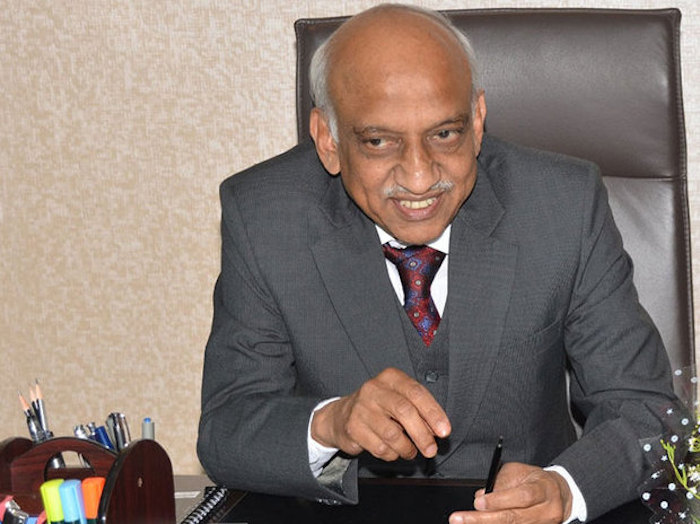
A S Kiran Kumar (pic courtesy: ISRO website)
Weather and wind speeds permitting, an almost 11-tonne rocket will lift off from rocket port Sriharikota tomorrow morning -- the first time India is launching an indigenous Reusable Launch Vehicle.
In an interview, Indian Space Research Organisation Chairman Kiran Kumar explains the importance of the experimental Reusable Launch Vehicle (RLV), which is essentially an attempt by India to bring down the cost of making infrastructure in space.
If reusable rockets become a reality, the cost of access to space may come down by 10 times.
Excerpts of the interview:
What is this RLV, or the Indian space shuttle?
See, the RLV is a mechanism for us to bring down the cost of launch. We intend to go through a series of technology demonstration exercises, first one of it, what we call HEX-01, that is a hypersonic experiment. It is called a winged body.
Therefore, we are designing for the first time a winged body, which will come back from space. It will be carried up on a solid rocket motor. In addition, this is the first of a series of experiments and we still have a long way to go till we reach the actual RLV, which will give us a tremendous capacity in terms of launching at a very low cost.
So essentially you will be launching from Sriharikota, and the RLV will land it somewhere in the Bay of Bengal?
Yes, the first experiment is like that, we will be launching from Sriharikota, and the plane like winged body will land in the ocean, in the Bay of Bengal. That is the first one, but then ultimately, the objective will be this winged body will come and land on the Sriharikota island.
So you will make a kind of a runway like one used to see for American space shuttles. So will we witness similar kinds of vehicles landing in Sriharikota in future?
Yes, ultimately, when it comes to the final stage, that is what will happen. This winged body will come back on to the land at Sriharikota.
Quelle: BS
-
Exclusive: Making Of ISRO's Space Shuttle
ISRO's first space shuttle will fly to a height of 70 kilometres, just short of escaping Earth's atmosphere.
-
In an unassuming hangar near a fishing village in Kerala, efforts of more than 600 scientists over the last five years have converged to bring India one of its most extraordinary milestones in space exploration.
It was here that India's very own space shuttle dubbed the Re-usable Launch Vehicle (RLV) was conceived and nurtured by the Indian Space Research Organisation or ISRO.
The project began more than a decade ago at the Vikram Sarabhai Space Centre in Thiruvananthapuram - India's main rocket designing and fabrication laboratory.
NDTV's Science Editor Pallava Bagla was given a very rare and unique access to view first-hand the making of the futuristic spacecraft.
The 6.5 metre-long scale model of the re-usable launch vehicle weighs about 1.75 tonnes and has been made at a cost of Rs. 95 crore.
.
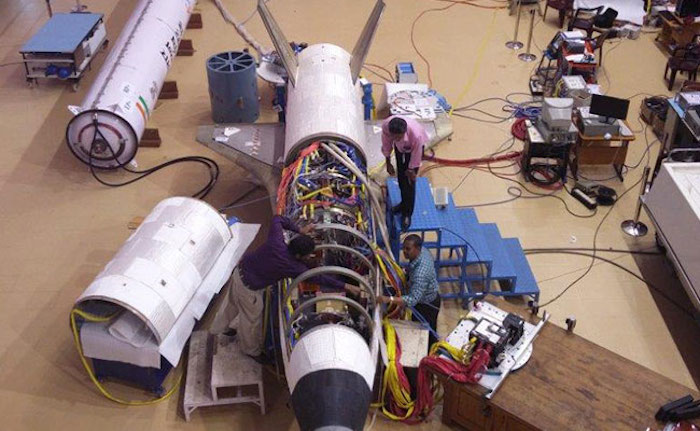
At 6.5 metres, this space shuttle is a scaled down replica of the final one, planned to be 40 metres.
Built as a technology demonstrator, ISRO plans to test two more such prototypes before the final version which will be about six times larger at around 40 metres and will take off around 2030.
Shyam Mohan, Project Director on the RLV, says his team has spent endless hours over the years trying to make sure that all systems work perfectly.
Mr Mohan, 53, who has spent three decades at ISRO, said he was chosen to design the RLV for India 15 years ago. "It was a dream come true as making a re-usable launch vehicle is a complex and challenging task," he said.
Americans successfully flew their space shuttles 135 times until they retired it in 2011 over cost constraints and the Russians flew it only once in 1989. Now India is boldly attempting to go where other space agencies have tried but failed.
K Sivan, director of the Vikram Sarabhai Space Centre, Thiruvananthapuram, said, "These are just the first baby steps towards the big Hanuman leap."
.
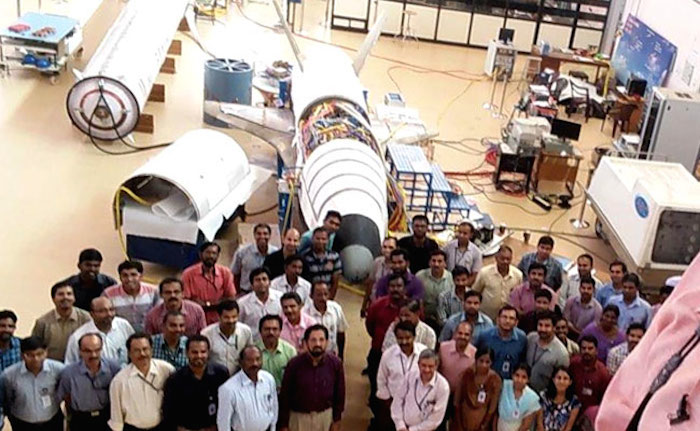
The space shuttle was built by a team of 600 scientists.
Weather and wind conditions permitting, the RLV-TD as ISRO calls this first experiment will be launched from India's rocket port at Sriharikota on the coast of the Bay of Bengal in Andhra Pradesh on Monday morning.
The spacecraft will be launched atop a 9-ton solid rocket engine that has been designed to burn slowly to accommodate the vertical lifting of a winged body.
After the launch, the space shuttle will fly to an altitude of 70 kilometres and then engage in a free-gliding flight that starts with an initial velocity five times that of sound. It will then land on a stretch of water in the Bay of Bengal some 500 kilometres from Sriharikota.
On this first flight, the RLV-TD will not be recovered but the data collected will be used to improve the designs, paving the runway to the final model - one small step for ISRO, one giant leap for India.
Quelle: NDTV
.
Update: 23.05.2016 / 7.15 MESZ
.
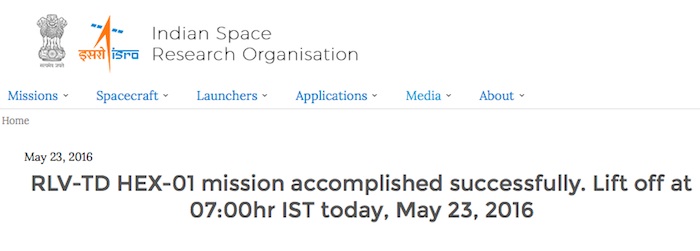
...
Update: 16.45 MESZ
.
India launches mini space shuttle
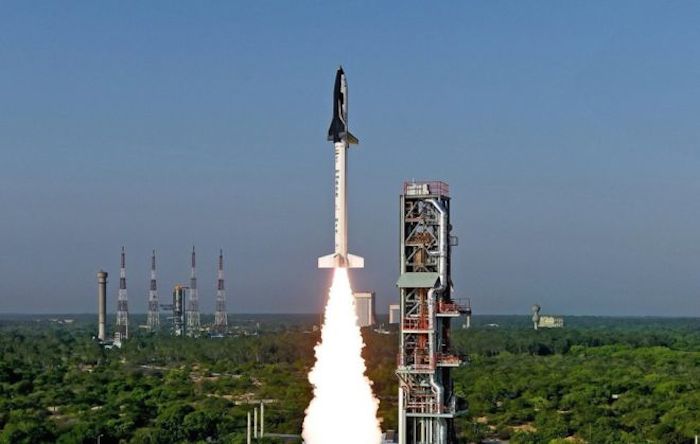
India has launched an unmanned model space shuttle, joining the race to develop reusable spacecraft.
The 7m scale model took off from Andhra Pradesh and was expected to fly about 70km (43 miles) into the atmosphere before coming down at sea.
Since Nasa stopped its Space Shuttle programme in 2011, there has been strong international competition to design alternative reusable spacecraft.
Such vehicles significantly cut the cost of space exploration.
India has been putting substantial research and resources into its space programme.
A Mars orbiter launched in 2013 is its most high profile space venture to date.
It hopes to launch a full scale reusable shuttle within a decade.
Hypersonic speed
Monday's launch of the Reusable Launch Vehicle (RLV-TD) took place at a site at Sriharikota.
Launch of India's first indigenous space shuttle RLV-TD is the result of the industrious efforts of our scientists. Congrats to them.Image copyright@NARENDRAMODI
The 1.75-tonne craft was not expected to survive the flight but was designed to enable the Indian Space Research Organisation (Isro) to collect important data on hypersonic speed and autonomous landing.
The model was developed over the past five years at a cost of 1bn rupees ($14m; £9.6m).
Prime Minister Narendra Modi praised the "industrious efforts" of the scientists involved.
Since the US retired its space shuttle programme, private companies like billionaire Elon Musk's SpaceX and Amazon owner Jeff Bezos's Blue Origin are trying to fill the gap.
Japan, Europe and Russia are also in the testing stages for similar technology.
Quelle: BBC
-
May 23, 2016
India’s Reusable Launch Vehicle-Technology Demonstrator (RLV-TD), Successfully Flight Tested
Today, May 23, 2016 ISRO successfully flight tested India’s first winged body aerospace vehicle operating in hypersonic flight regime.
In this experimental mission, the HS9 solid rocket booster carrying RLV-TD lifted off from the First Launch Pad at Satish Dhawan Space Centre, Sriharikota at 07:00hr IST. After a successful flight of 91.1second, HS9 burn out occurred, following which both HS9 and RLV-TD mounted on its top coasted to a height of about 56 km. At that height, RLV-TD separated from HS9 booster and further ascended to a height of about 65km.
From that peak altitude of 65 km, RLV-TD began its descent followed by atmospheric re-entry at around Mach 5 (five times the speed of sound). The vehicle’s Navigation, Guidance and Control system accurately steered the vehicle during this phase for safe descent. After successfully surviving a high temperatures of re-entry with the help of its Thermal Protection System (TPS), RLV-TD successfully glided down to the defined landing spot over Bay of Bengal, at a distance of about 450km from Sriharikota, thereby fulfilling its mission objectives. The vehicle was successfully tracked during its flight from ground stations at Sriharikota and a shipborne terminal. Total flight duration from launch to landing of this mission of the delta winged RLV-TD, lasted for about 770seconds.
In this flight, critical technologies such as autonomous navigation, guidance & control, reusable thermal protection system and re-entry mission management have been successfully validated.
ISRO acknowledge the support of Indian coast guard and National Institute of Ocean technology (NIOT) for the mid sea wind measurement and shipborne telemetry respectively in this mission.
Quelle:ISRO
-
India successfully launches Reusable Launch Vehicle demonstrator mission
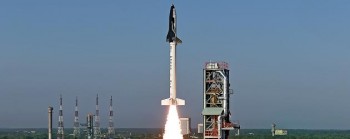
The Indian Space Research Organisation has successfully launched a Reusable Launch Vehicle Technology Demonstrator mission. The flight began at 07:00 Indian Standard Time on 23 May (01:30 UTC), resulting in a successful launch for the winged, reusable space plane that conducted a suborbital mission to gather in-flight data.
Reusable Launch Vehicle Technology Demonstrator:
The quest to develop reusable spaceflight has led the Indian Space Research Organisation (ISRO) to develop a series of Technology Demonstration missions in a phased approach toward the introduction of a new Two-Stage To Orbit, winged, reusable launch vehicle.
As part of this development sequence, ISRO has developed a four flight test sequence that will incrementally test the various flight characteristics its under-development Reusable Launch Vehicle (RLV) will experience during flight as well as the scramjet propulsion engines the RLV is planned to use.
This four flight test sequence includes the Hypersonic Flight Experiment (HEX), the Landing Experiment (LEX), the Return Flight Experiment (REX), and the Scramjet Propulsion Experiment (SPEX).
The mission that launched was HEX, the first test in the four-flight sequence.
The HEX mission used a scaled prototype, called the Reusable Launch Vehicle – Technology Demonstrator (RLV-TD), of the RLV design.
In total, the RLV-TD is a 1.75 ton, 6.5 meter long vehicle that is able to achieve an altitude of approximately 70 kilometers.
.
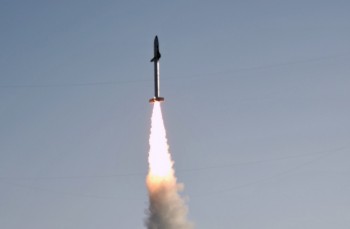
The RLV-TD was mounted atop a 1 meter in diameter, 9 ton solid booster (HS9) and launched from the first launchpad at the Satish Dhawan Space Centre, previously known as the Sriharikota High Altitude Range, in southeastern India.
The HS9 booster launched the RLV-TD beyond most of Earth’s lower atmosphere.
After a 90sec burn, the booster delivered the RLV-TD to the proper altitude before separating from the prototype and destructively fall back to Earth in the Bay of Bengal.
Meanwhile, the RLV-TD continued on, falling back into Earth’s atmosphere at hypersonic velocity.
.
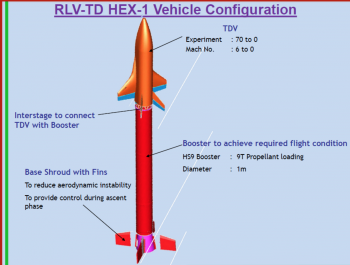
During this hypersonic test, the RLV-TD pitched its nose up relative to the horizon and direction of travel – just as the Space Shuttles did during atmospheric entry.
This allowed engineers to gather valuable in-flight data surrounding the performance of the vehicle’s thermal protection system (600 heat-resistant tiles and a carbon-carbon nose), its aerodynamic characteristics during hypersonic flight, and inform the overall design of the eventual full-scale RLV.
Since this was primarily a hypersonic flight technology demonstration mission, this particular RLV-TD did not carry the capability to return to land for landing.
Therefore, once it performed its primary mission glide through the atmosphere, it splashed down into the Bay of Bengal.
.
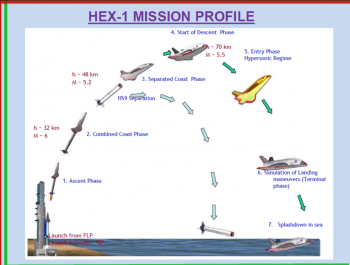
While several sources claimed that the HEX mission RLV-TD was to be recovered, an equal number of sources claim that it wasn’t to be recovered. The latter proved to be correct as officials noted that while recovery ships had been deployed, the recovery of the vehicle was not in the planning for this test.
The entire flight, from liftoff to splashdown was claimed to have lasted approximately 20 minutes.
Regardless of recoverability, HEX carried five distinct mission objectives, including: validating the aerodynamic design characteristics of the RLV during hypersonic flight, characterizing induced loads during hypersonic re-entry into the atmosphere, recovering the vehicle from the sea, assessing the performance of the carbon fibre used in construction of the nose of the vehicle, and demonstrating first stage separation sequencing.
It should be noted that these mission objectives have not been publically updated since 2009, which initially pointed at the “recovery of the vehicle” objective. However, that has since moved to future tests.
The Road to the HEX mission:
As with all first flight scenarios, several proposed and targeted launch dates have come and gone for the HEX mission.
.
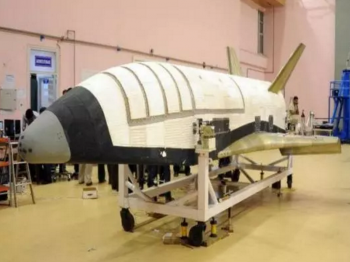
The initially stated launch date was in 2009, but has slipped incrementally as various testing and support facilities came on line.
By the end of 2014, ISRO stated that the HEX mission would launch in one year’s time.
For a while, that looked like it would hold true, with numerous media events and releases in early 2015 stating that the HEX mission was targeted for the “first half of 2015”.
In March-April 2015, ISRO highlighted the work over the previous year toward RLV-TD, which included studies of 3D heat flux and shear distribution of heat over the test vehicle, software validations, uplink trials of telemetry packages with satellites, and actuator design, fabrication, and acceptance testing.
Moreover, the HS9 solid rocket motor’s Secondary Injection Thrust Vector Control System was tested successfully.
.
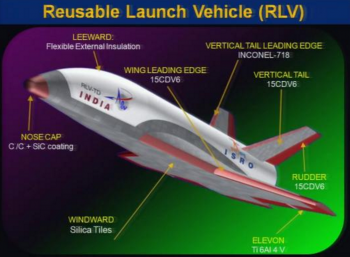
By April 2015, ISRO stated that the HS9 solid booster was at Satish Dhawan Space Centre and that flight of the HEX mission was on track to occur before July 1, 2015.
However, by mid-May 2015, launch had slipped to the second half of 2015, and vehicle integration was still 8-10 weeks away.
This delay was directly linked to ISRO’s decision to prioritize its commercial launches ahead of HEX.
The mission then slipped to early 2016 before settling in May 2016 after a leak was found before final ground testing on the RLV-TD.
The HEX vehicle arrived at the launch site in late-April and was integrated to its HS9 booster without publicized issue.
A Mission Readiness Review was conducted on May 11 and cleared the RLV-TD and booster for launch.
Quelle: NS
.
ISRO thanks Indian coast guard, NIOT for support in successful mission
the Indian Space Research Organization (ISRO), which successfully flight tested Indias first winged body aerospace vehicle operating in hypersonic flight regime today, acknowledge the support of Indian coast guard and National Institute of Ocean technology (NIOT) for the mid sea wind measurement and shipborne telemetry respectively in this mission.
In this experimental mission, the HS9 solid rocket booster carrying RLV-TD lifted off from the First Launch Pad at Satish Dhawan Space Centre, Sriharikota at 07:00hr IST.
After a successful flight of 91.1second, HS9 burn out occurred, following which both HS9 and RLV-TD mounted on its top coasted to a height of about 56 km. At that height, RLV-TD separated from HS9 booster and further ascended to a height of about 65km.
From that peak altitude of 65 km, RLV-TD began its descent followed by atmospheric re-entry at around Mach 5 (five times the speed of sound). The vehicles Navigation, Guidance and Control system accurately steered the vehicle during this phase for safe descent.
After successfully surviving high temperatures of re-entry with the help of its Thermal Protection System (TPS), RLV-TD successfully glided down to the defined landing spot over Bay of Bengal, at a distance of about 450km from Sriharikota, thereby fulfilling its mission objectives.
The vehicle was successfully tracked during its flight from ground stations at Sriharikota and a shipborne terminal.
Total flight duration from launch to landing of this mission of the delta winged RLV-TD, lasted for about 770seconds.
In this flight, critical technologies such as autonomous navigation, guidance and control, reusable thermal protection system and re-entry mission management have been successfully validated.
President Pranab Mukherjee, Vice President Hamid Ansari and Prime Minister Narenda Modi congratulated ISRO on their feat and wished them luck for future endeavours.
Quelle: BS
.
After Successful Launch of Reusable Vehicle, ISRO Has Further Plans for Slashing Launch Costs
ISRO’s immediate priorities are to make its own launch vehicles more reliable, increase the payload they are able to carry and reduce the cost of their manufacturing.
.
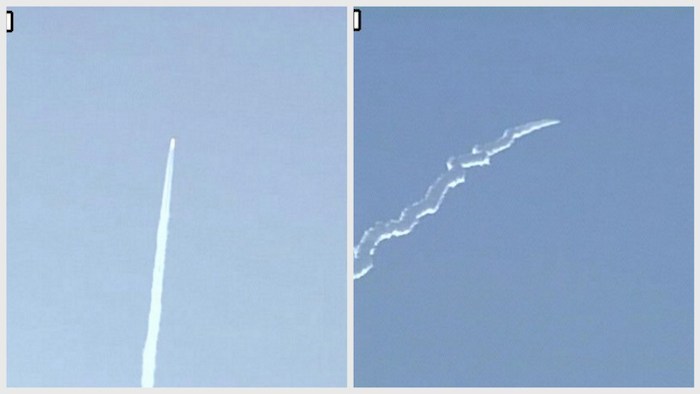
ANI images showing the solid-fuel booster lofting the RLV technology demonstrator before the descent phase begins. Source: ANI_news/Twitter
On Monday morning, the Indian Space Research Organisation successfully flight tested its ‘Reusable Launch Vehicle – Technology Demonstrator’ (RLV-TD) from the Satish Dhawan Space Centre (SDSC) in Sriharikota, Andhra Pradesh. This winged craft, with its distinctive twin tail-fins, is intended as a key step toward the space agency’s goal of creating a reusable launch vehicle that could cut launch costs by as much as nine-tenths.
In the flight test, the RLV-TD was carried aloft by a rocket booster and reached an altitude of about 65 km. It then descended, reaching a peak velocity of five times the speed of sound, before landing in the Bay of Bengal about 13 minutes later. “The vehicle’s navigation, guidance and control system accurately steered the vehicle during this phase for safe descent,” an ISRO release said, and the craft successfully survived the “high temperatures of re-entry with the help of its Thermal Protection System.”
ISRO’s current conception for such a reusable launcher is to have a two-stage-to-orbit configuration. A winged first stage would incorporate an advanced air-breathing propulsion system that takes in air as it flies to burn the fuel carried onboard. This stage would take the second stage and payload high up into the atmosphere and, after separating from the latter, return to land on a runway.
The second stage would accelerate the payload the rest of the way using conventional rocket propulsion. Afterward, this second stage too would be brought back to the ground. However, such an advanced launch vehicle may materialise only “some 20 years from now”, according to K. Sivan, director of the Vikram Sarabhai Space Centre in Thiruvananthapuram, ISRO’s lead centre for launch-vehicle development.
But with SpaceX, the American spaceflight company started by entrepreneur Elon Musk, promising to achieve rocket reuse and bring about lower launch costs with existing technology, ISRO has some plans to ensure it remains competitive in the short-term as well.
SpaceX’s Falcon 9 rocket, with just two stages powered by liquid engines, has carried satellites into orbit and sent its Dragon capsule, loaded with cargo, to dock with the International Space Station. On three such flights, the rocket’s first stage, after separating from the second stage, fired its engines again and successfully made a controlled descent back to earth. On one occasion, it returned and made a vertical touchdown a short distance from the launch pad it had left a short time earlier. Then, in two recent flights, it landed on a drone ship stationed out in the ocean.
SpaceX intends to reuse the first stages that return but has yet to demonstrate this capability. The company’s president, Gwynne Shotwell has indicated that such reuse could lead to a 30% saving in costs.
Sivan made it clear that ISRO’s immediate priorities are to make its own launch vehicles more reliable, increase the payload they are able to carry and reduce the cost of their manufacturing. If the Geosynchronous Satellite Launch Vehicle (GSLV), which can launch a 2.2-tonne communications satellite, is able to carry a 3.5-tonne satellite, “the vehicle becomes more efficient,” he remarked. And with vehicle cost remaining unchanged, the cost per kg for the satellite it launches comes down.
In the case of the next generation GSLV Mk-III rocket, its payload capability could be increased from four tonnes to six tonnes. Then, substituting a semi-cryogenic engine, which is currently being developed, for the two Vikas liquid propellant engines in the rocket’s core booster could further raise its payload to 7.5 tonnes.
Vehicle costs could also be reduced. One measure being considered is to shift from maraging steel used for the big solid boosters that form the first stage of the PSLV and the GSLV to a cheaper steel, Sivan said.
In addition, ISRO was “very seriously” thinking of retrieving and reusing the core boosters of the GSLV and GSLV Mk-III in a SpaceX-like manner, according to him. The next generation Heavy Lift Launch Vehicle could also be designed with such reuse in mind.
The GSLV’s first stage, along with the four liquid-propellant strap-on boosters attached to it, account for almost three-fourths of the launch vehicle’s costs. “If we are able to recover and reuse [it], our reduction in cost will be maximum,” he said.
The GSLV’s payload would be halved if the the rocket’s first stage and strap-ons were manoeuvred back to the SDSC. However, the loss in payload would come to only about 80 kg if the stage soft-landed where it would naturally fall after separation. India could take advantage of the Andaman Islands and get the first stage to land there after equatorial launches from Sriharikota, Sivan remarked.
Gopal Raj is a science journalist based in Thiruvananthapuram. He has written extensively about the Indian space programme, including a book, Reach for the Stars: The Evolution of India’s Rocket Programme.
Quelle: WIRE
.
Isro takes the first step in developing reusable launch vehicle
Successfully tests RLV-technology demonstrator, a small aircraft-like winged structure; vehicle to achieve low-cost space access
.
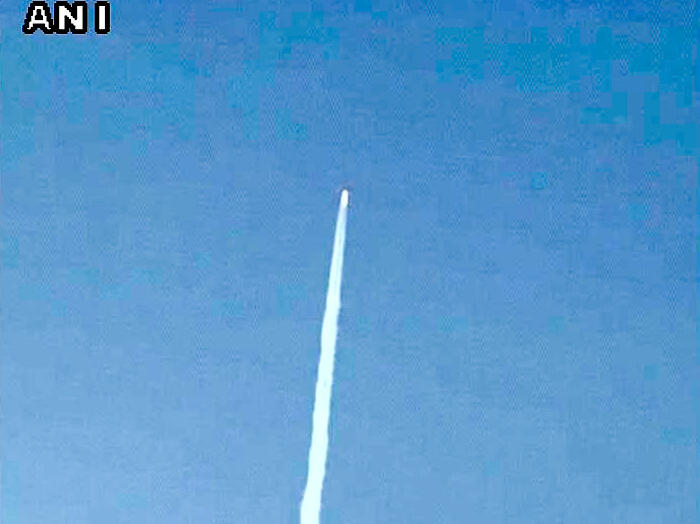
India's first reusable launch vehicle (RLV-TD) successfully lifts off from Sriharikota
The Indian Space Research Organisation (Isro) on Monday successfully took a first step in developing a Reusable Launch Vehicle (RLV).
The organisation successfully tested RLV-TD (technology demonstrator). It is a small, aircraft-like, winged structure.
A spokesperson from Isro said that RLV-TD HEX-01 mission was accomplished successfully. The lift-off happened at 7 am.
The RLV-TD is a rocket-aircraft combination measuring about 17 m, whose first stage is a solid propellant booster rocket and the second stage is a 6.5-m long aircraft-like winged structure sitting atop the rocket.
The RLV-TD is a series of technology demonstration missions that has been considered as a first step towards realising a Two Stage To Orbit (TSTO) fully re-usable vehicle.
A winged Reusable Launch Vehicle technology Demonstrator (RLV-TD) has been configured to act as a flying test bed to evaluate various technologies, namely, hypersonic flight, autonomous landing, powered cruise flight and hypersonic flight using air-breathing propulsion.
These technologies will be developed in phases through a series of experimental flights. The first in the series is the hypersonic flight experiment (HEX), followed by the landing experiment (LEX), return flight experiment (REX) and scramjet propulsion experiment (SPEX). Reusable Launch Vehicle Technology Demonstrator Hypersonic Experiment (RLV-TD HEX1) wherein the hypersonic aero-thermo dynamic characterization of winged re-entry body along with autonomous mission management to land at a specified location and characterization of hot structures are planned to be demonstrated.
Earlier Dr K Sivan, director of the Vikram Sarabhai Space Centre (VSSC), Thiruvananthapuram, where the RLV-TD was designed, assembled and where it underwent basic tests, said that the objective is to achieve hypersonic speeds to test the characterisation of the winged body’s re-entry, its control and guidance systems, autonomous mission management to land at a specific location at sea and testing of hot structures that make up the structure of the RLV.
The test is termed as Hypersonic Experiment 1 (HEX-1).
The first test launch HEX1 is a very preliminary step and Isro has to go a long way before it could be called a re-usable launch system. But these are very essential steps Isro has taken.
A reusable launch vehicle is the unanimous solution to achieve low cost, reliable and on-demand space access, says the space organisation.
He was quoted saying a conventional launch vehicle (LV) spends the lowest time of its flight in the atmosphere, whereas the RLV system spends all the time in the atmosphere.
The technology of an RLV is much more complex basically arising from the design of the control and guidance systems, he pointed out.
The objective of the RLV programme of ISRO is to enable the vehicle traverse a very wide range of flight regimes from Mach 0 to Mach 25 based on air-breathing propulsion for achieving two-stage-to-orbit (TSTO) launch capability.
.
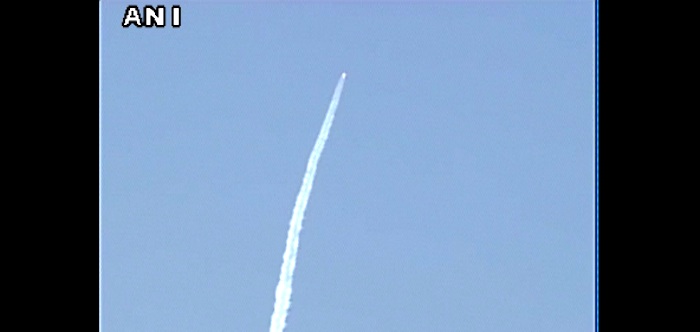
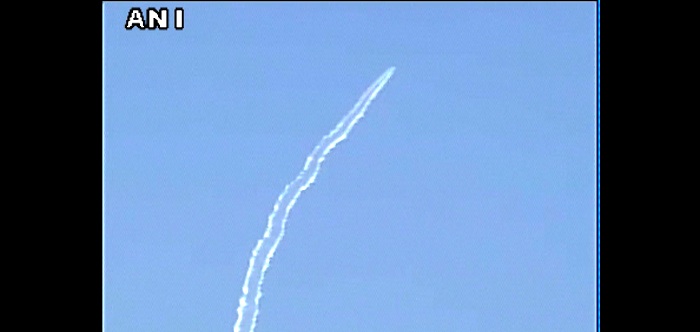
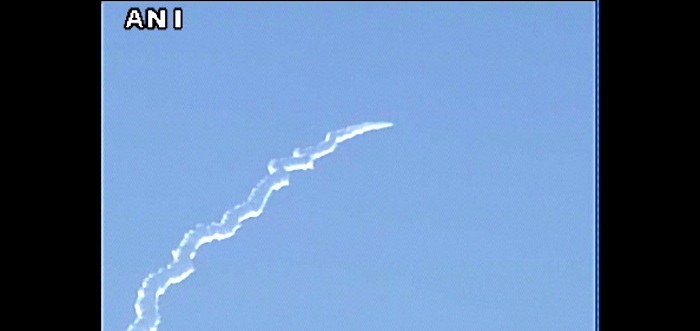
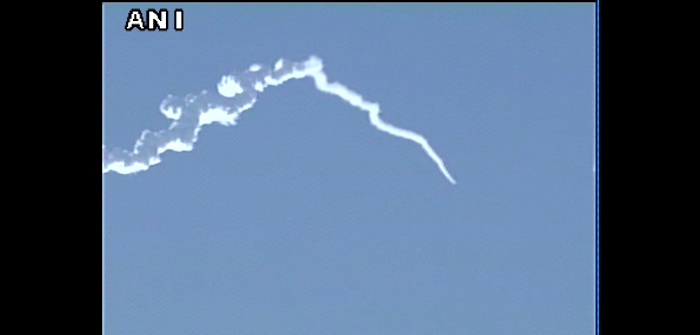
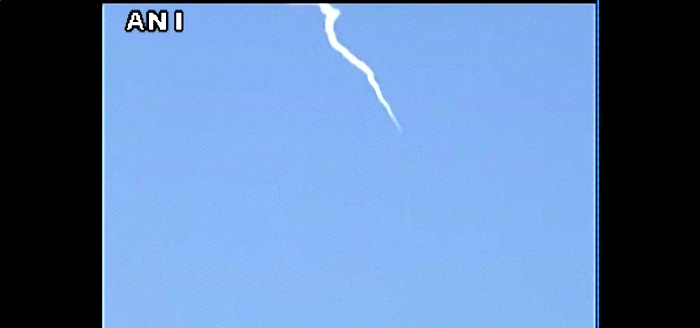
Quelle: BS / Frams: INA
.
Swadeshi Space Shuttle Tests, ISRO's 'Mission Accomplished': 10 Facts
SRIHARIKOTA: India successfully tested its first-ever swadeshi or indigenous space shuttle today as its scale model - the Re-Usable Launch Vehicle - Technology Demonstrator or RLV-TD - was launched from Sriharikota in Andhra Pradesh at 7 am. Nearly 20 minutes after its lift-off, the Indian Space Research Organization (ISRO) announced, "mission accomplished".
Here are 10 must-know facts about the big launch:
The 6.5 metre-long scale model of the re-usable launch vehicle weighs about 1.75 tonnes and was made at a cost of Rs. 95 crore. It was built at the Vikram Sarabhai Space Centre in Thiruvananthapuram by a team of 600 scientists over five years.
Re-usable technology aims to help reduce the cost of launching objects into space by 10 times. It costs about $ 20,000 to send a kilogram in space currently.
Indian Space Research Organization or ISRO plans to test two more such prototypes before the final version which will be about six times larger at around 40 metres and will take off around 2030.
After the test flight was declared successful, Prime Minister Narendra Modi congratulated scientists at ISRO and tweeted: “Launch of India's first indigenous space shuttle RLV-TD is the result of the industrious efforts of our scientists. Congrats to them.”
The spacecraft was launched atop a nine-ton rocket engine that has been designed to burn slowly to accommodate vertical lifting of a winged body.
After the launch, the space shuttle flew to an altitude of 70 kilometres and then engaged in a free-gliding flight that started with an initial velocity five times that of sound. It then landed on a stretch of water in the Bay of Bengal some 500 kilometres from Sriharikota.
This was the first time that ISRO flew a winged body and brought it back to land on a make-shift runway. In further tests, an undercarriage will be placed to make it land, possibly at Sriharikota.
The final RLV will be about 40 meters in length and will also be able carry Indian astronauts. On this first flight, the RLV-TD will not be recovered but the data collected will be used to improve the designs, paving the runway to the final model.
No other country is currently operationally flying a winged spacecraft into space - the US retired its space shuttles in 2011 and the Russians flew theirs only once in 1989.
In a race to master re-usable technology for space shuttles, the RLV will be pitted against the likes of SpaceX's Falcon 9 and Blue Origin's New Shephard rocket - both the companies have already partially tested re-usable space shuttles.
TRENDING
Movies: Amitabh Bachchan's Granddaughter Navya Shares Pics From Graduation Day
Gadgets: Tablets, Laptops, Electronics Not Eligible for Refunds: Amazon India
Auto: Maruti Suzuki Ciaz SHVS and Ertiga SHVS Receive Big Price Cut in Delhi
HIGHLIGHTS
1
India successfully tests indigenous space shuttle
2
Built by team of 600 scientists at a cost of Rs. 95 crore over 5 years
3
It will help reduce cost of launching objects into space by 10 times
submit to redditFlip
-
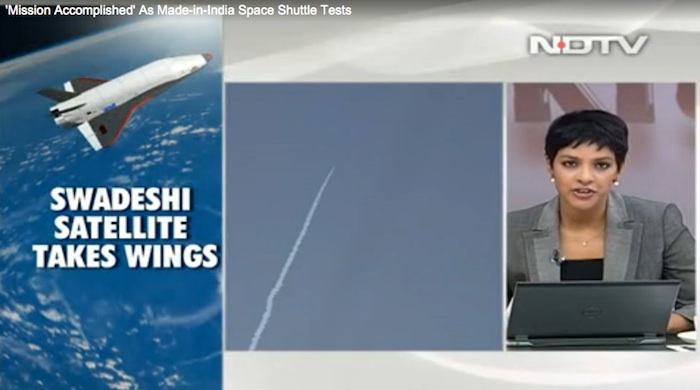
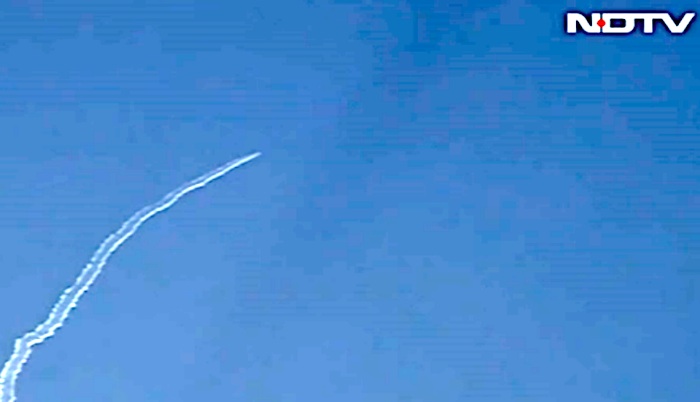
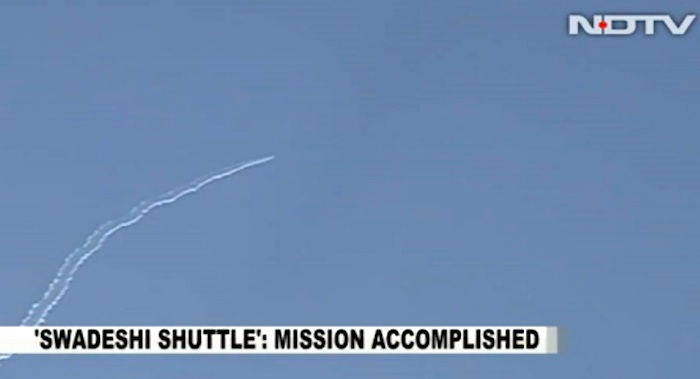
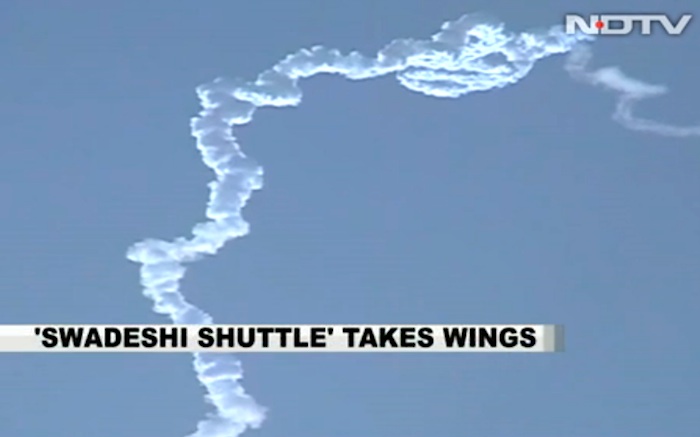
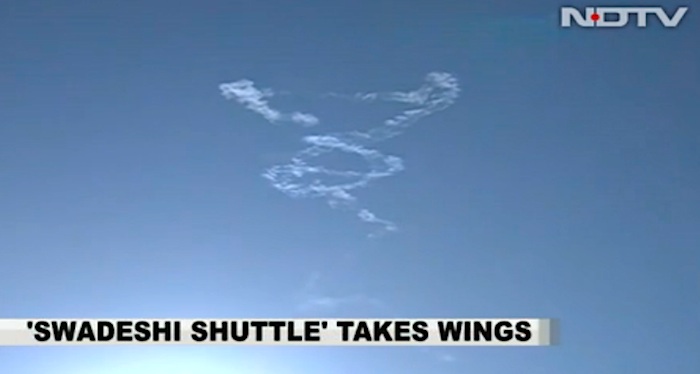
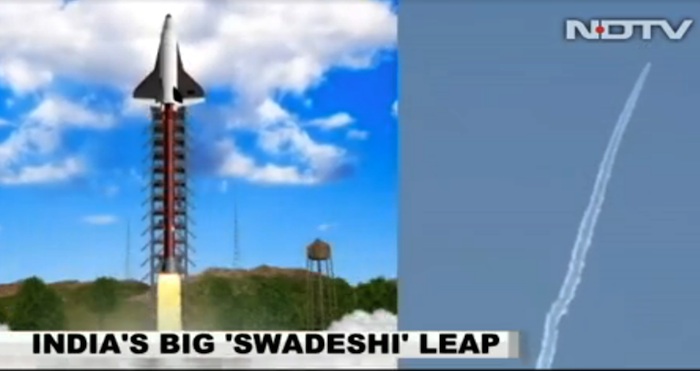
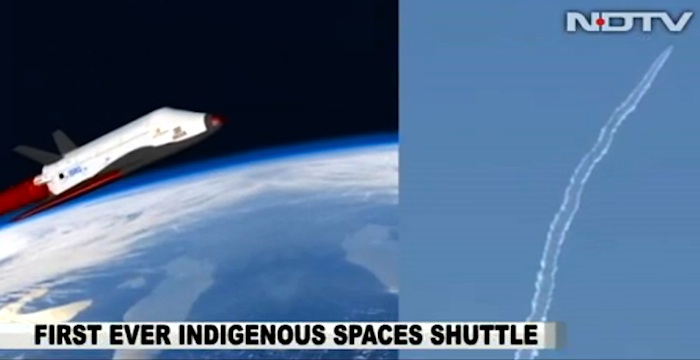
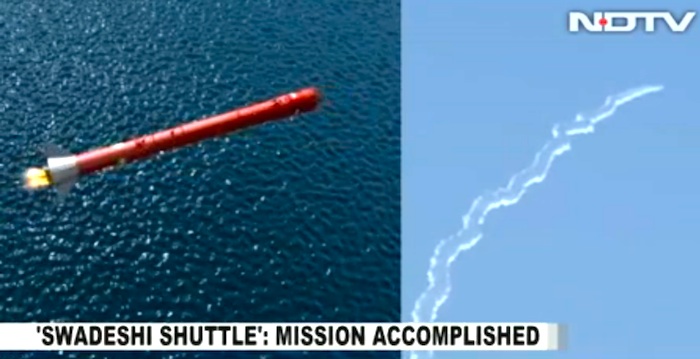
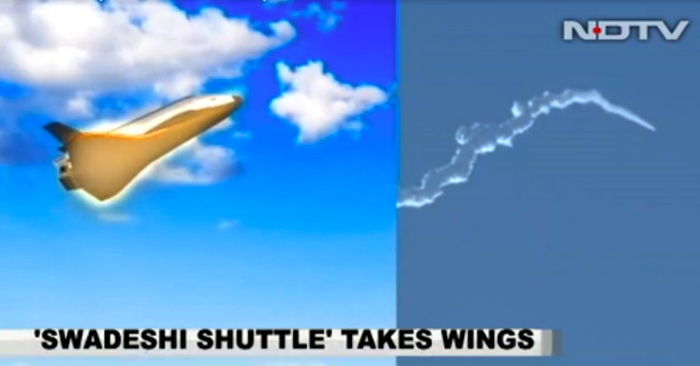
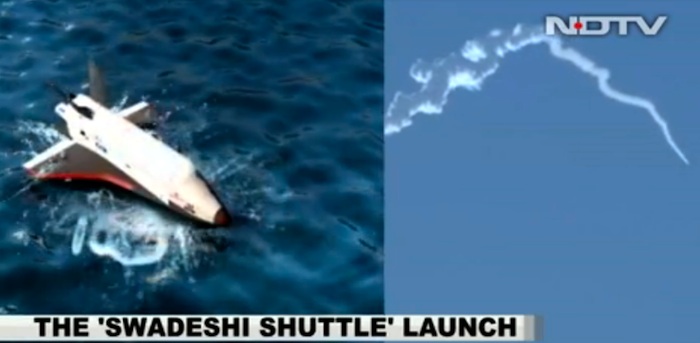
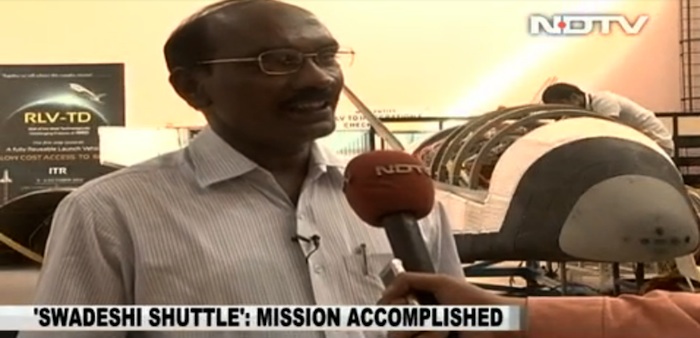
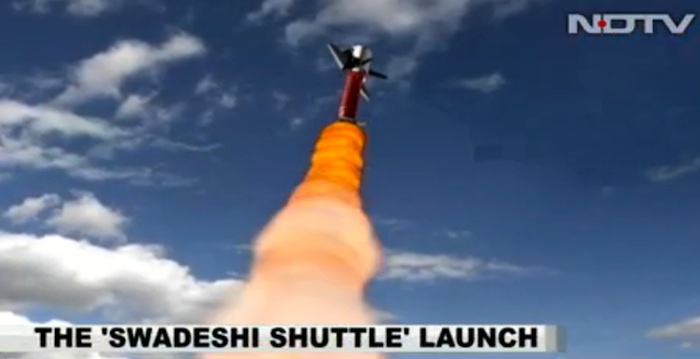
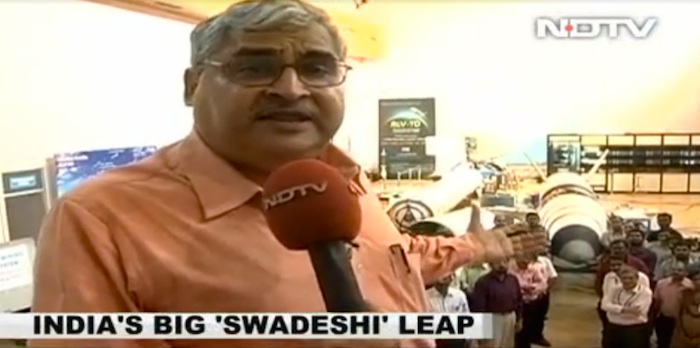
Quelle: NDTV
.
Indigenous technology demonstrator of reusable launch vehicle tested successfully
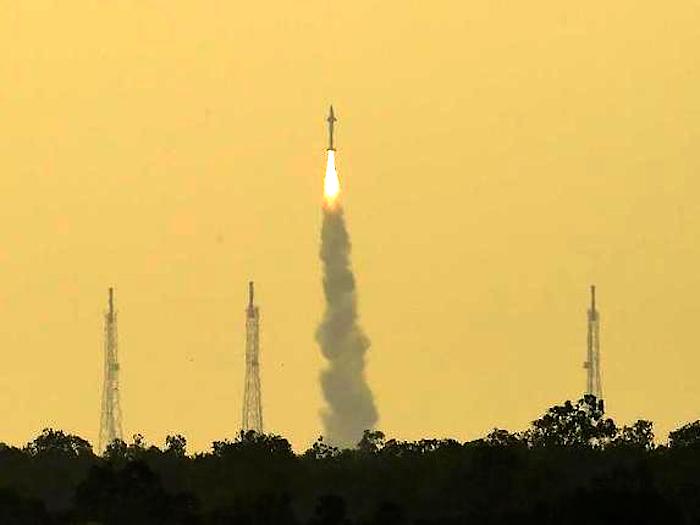
Indigenous technology demonstrator of reusable launch vehicle tested successfully
This experiment of ISRO is only a very preliminary step towards developing reusable launch vehicles.
India on Monday successfully launched the first technology demonstrator of indigenously made Reusable Launch Vehicle (RLV), capable of launching satellites into orbit around earth and reentering the atmosphere, from Sriharikota in Andhra Pradesh.
A booster rocket with the RLV-TD lifted up at 7 a.m. from the Satish Dhawan Space Centre, and the launch vehicle separated from it at an altitude of 50 km.
The RLV-TD or winged space plane then climed to another 20 km and began its descent. It re-entered to earth's atmosphere at an hypersonic speed of more than 5 Mach and touched down the Bay of Bengal between Chennai and the Andaman archipelago.
Known as hypersonic flight experiment, it was a 10-minute mission from liftoff to splashdown.
An ISRO spokesman said the mission was accomplished successfully. "Everything went according to the projectory, he said adding that the winged space plane would not be recovered from the sea.
This successful experiment of ISRO is only a very preliminary step towards developing reusable launch vehicles.
Several flights of RLV-TD will have to be undertaken before it really becomes a reusable launch system to put satellites into orbit.
M.C. Dathan, former director, Vikram Sarabhai Space Centre, Thiruvananthapuram, said: "The mission was successful. And the RLV-TD is healthy and floating on the sea."
RLV, being dubbed as India’s own space shuttle, is the unanimous solution to achieve low cost, reliable and on-demand space access, according to ISRO scientists.
RLV-TD is a series of technology demonstration missions that have been considered as a first step towards realising a Two Stage To Orbit (TSTO) fully re-usable vehicle, ISRO said.
It has been configured to act as a flying testbed to evaluate various technologies, including hypersonic flight, autonomous landing, powered cruise flight and hypersonic flight using air-breathing propulsion, it said.
All you need to know about the project
» India’s space port at Sriharikota on the coast of the Bay of Bengal in Andhra Pradesh will witness the launch of the indigenously made Reusable Launch Vehicle-Technology Demonstrator (RLV-TD). After the launch, it will be glide back onto a virtual runway in the Bay of Bengal.
» The RLV-TD is unlikely to be recovered from sea during this experiment as it is expected that the vehicle will disintegrate on impact with water since it is not designed to float.
» The purpose of the experiment is to help the shuttle glide over a virtual runway in the Bay of Bengal, situated 500 km from the coast.
» India’s frugal engineers believe the solution to reducing cost of launching satellites into orbit is to recycle the rocket or make it reusable.
» Scientists at ISRO believe that they could reduce the cost by as much as 10 times if reusable technology succeeds, bringing it down to $2,000 per kg.
» K. Sivan, director of the Vikram Sarabhai Space Centre, Thiruvananthapuram, says, “These are just the first baby steps towards the big Hanuman leap.”
» The final version will take at least 10-15 years to get ready.
» The special booster or the first stage is powered using a solid fuel and it will hoist the RLV-TD prototype to about 70 km into the atmosphere from where the descent will begin.
» During the descent phase, small thrusters will help the vehicle navigate itself to the landing area.
» The making of the Indian space shuttle or RLV-TD has taken five years and the government has invested Rs. 95 crore in the project. This flight will test the capability of the vehicle to survive a re-entry at speeds higher than that of sound.
Quelle: THE HINDU
.
Update: 24.05.2016
.
Reusable Launch Vehicle-Technology Demonstrator (RLV-TD) Images
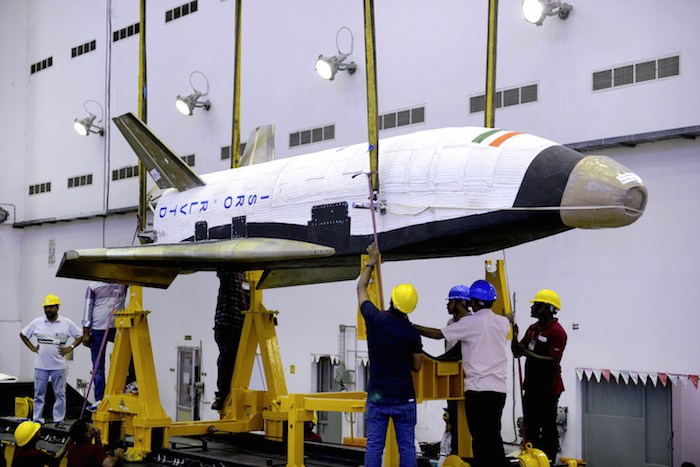
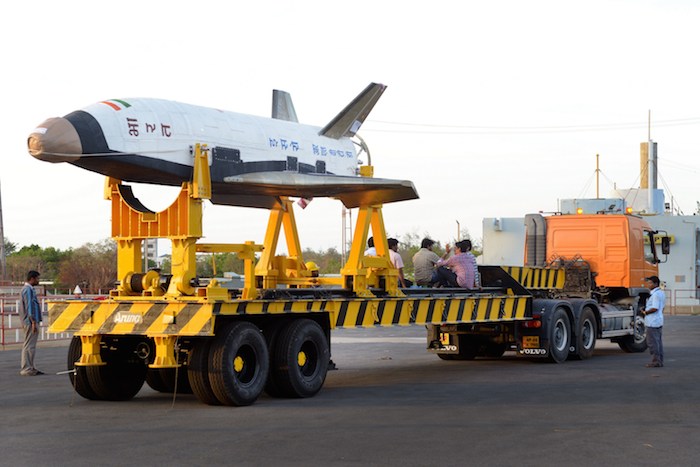
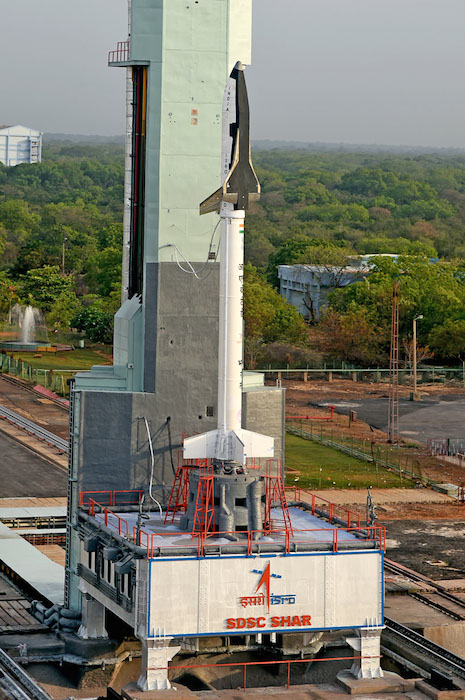
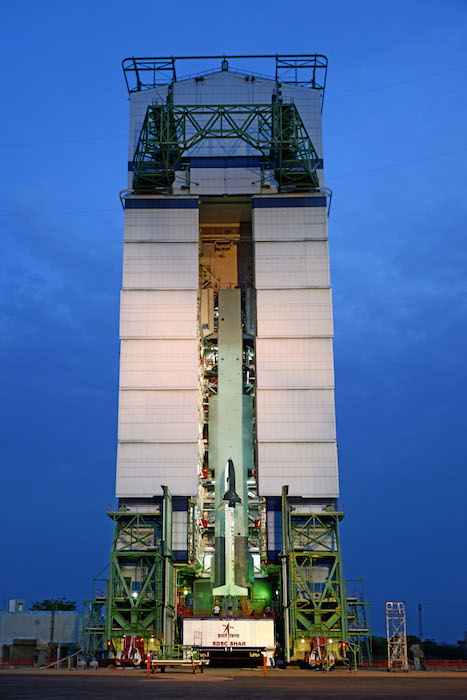
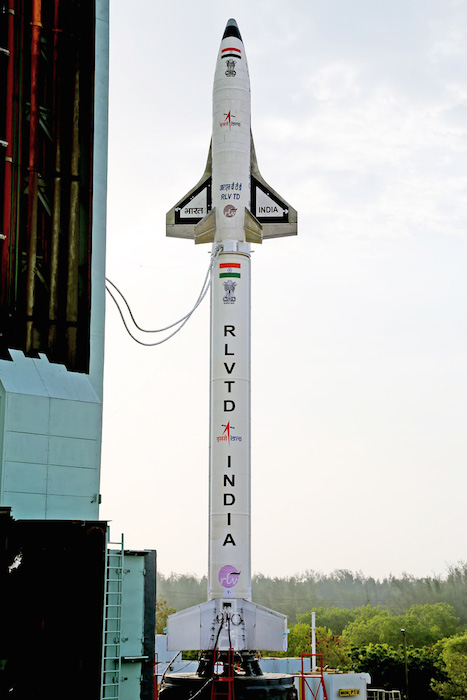

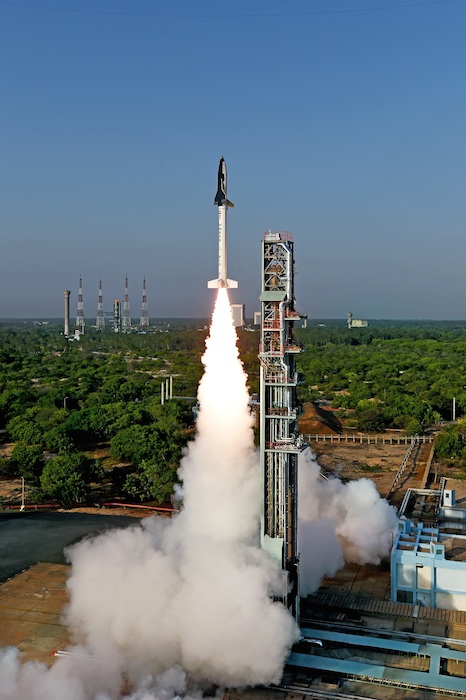
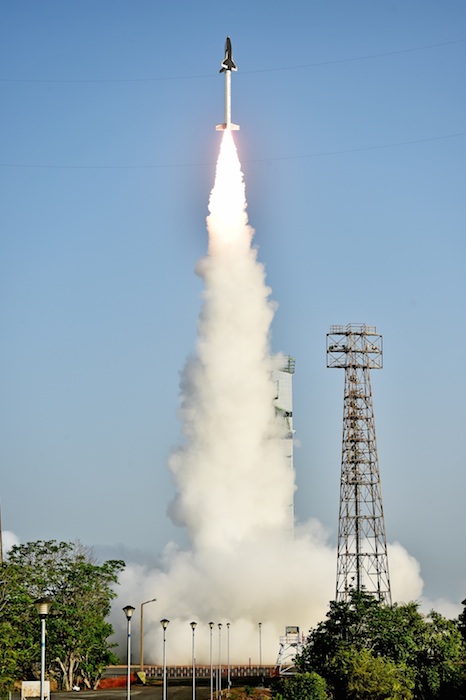
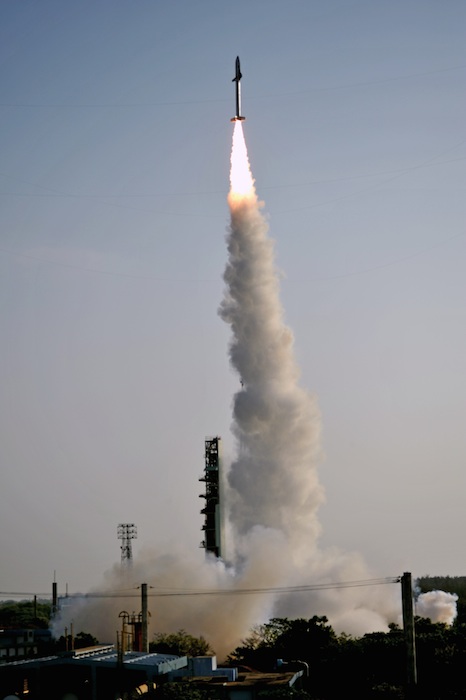
Quelle: ISRO
-
May take 10 years for India to have reusable rocket: Former ISRO chief
Describing Monday’s successful launch of an indigenously winged Reusable Launch Vehicle (RLV) as a small step in achieving the objective of reducing the cost of space transportation, top space scientist G Madhavan Nair said it may take ten years for the country to put in place such an operational rocket.
India today successfully launched the first technology demonstrator of indigenously made RLV, capable of launching satellites into orbit around earth and then re-enter the atmosphere, from Sriharikota in Andhra Pradesh.
Highlighting that India has been in the field of rocket launchers and satellite launches and has gained a good technical base in rocket technology, Nair, the former Chairman of Indian Space Research Organisation (ISRO), however, said since these rockets are expended after each launch, the cost of access to space remains high.
HT Explains: What is Isro’s Reusable Launch Vehicle and why it matters
“If you want to reduce the cost of access to space, the hardware has to be reused. So, the recoverable and reusable launch vehicle demonstrator is a small step towards achieving the final goal like that. And that is very much needed,” he told PTI.
“When you want to have future space programme, either you want to have an orbiting platform or to go to Moon or Mars etc, we have to significantly bring down the cost of launchers. To achieve low cost access to space, recoverable and reusable launch vehicle is a must,” Nair said.
“A host of technologies related to hypersonic flight, and the thermal management and re-entry, and all these things are big question mark before us. This demonstrator is a small beginning towards that wherein rocket technology and aircraft technology has been integrated together and ISRO team has done an excellent job in making this demonstration today,” he said.
Asked how long he believe it would take for the country to operationalise the system, Nair said, “My feeling is that such a programme if it’s initiated today it will take about ten years before you can have first operational system. So, that’s a long way to go.”
So, ISRO certainly has to come out with its long-term plan, he said.
“At the moment, there is nothing visible. They have to worry about what they will be doing in the next ten years, and integrating all such technologies and ambitious goals of planetary explorations and the spacecraft of new generation have to be chalked out into the next ten year plan,” he said.
Quelle: hindustantimes
4970 Views

